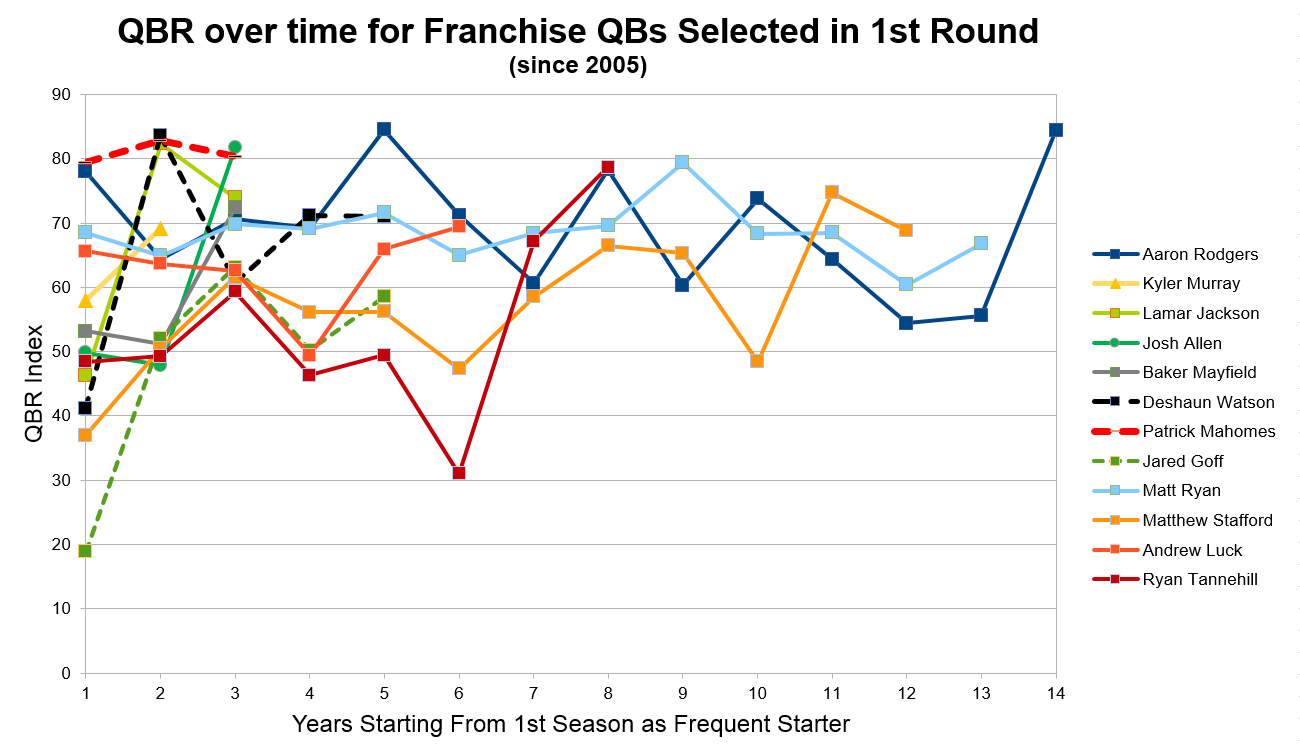First, an apology to my wife. The above photo was the one of the few Miami Dolphin-related public copyright photos I could find on short notice. It should not be regarded, however, as an endorsement of fake smiles.
Now, to the issue at hand…
Alabama’s Tua Tagovailoa was the fifth overall pick and second quarterback taken in the 2020 National Football League (NFL) draft.
Drafted by the Miami Dolphins, Tagovailoa was drafted behind Heisman winner Joe Burrow (QB — Cincinnati Bengals) and Ohio State’s Chase Young (DE — Washington Sea Dogs) and was one of four quarterbacks selected in the first round. San Diego took the third quarterback, Oregon’s Justin Herbert, as the sixth overall pick and Green Bay— mysteriously — thought Utah State’s Jordan Love, the 26th overall pick and fourth quarterback taken, was that final piece needed for the Aaron Rodgers-led Packers to win another Super Bowl (…and, even more mysteriously, Love’s clipboard-holding skills seem to be what the Cheeseheads needed this season).
Normally when an NFL team drafts a quarterback as high as fifth, they give him at least a few years to earn his first round contract. The Tampa Bay Buccaneers gave first overall pick Jameis Winston five years, as did the Tennessee Titans with second overall pick Marcus Mariota. Sam Bradford and Mark Sanchez were offered four years to prove their value to their respective teams, the St. Louis Rams and New York Jets. The oft-injured Robert Griffin III — the Washington Federals’ second pick in the 2012 draft —had three years. Even purple drank jugging rumors didn’t stop JaMarcus Russell from getting two solid years of opportunity from the Oakland Raiders.
And, keep in mind, the Dolphins’ 2012 first round pick — and current Titans quarterback — Ryan Tannehill gave the team six mediocre seasons before they jettisoned him in 2019. The Dolphins were patient with Tannehill — who has turned into a high-quality quarterback — so why not with Tagovailoa?
While being impatient with his head coaches, having had six since buying the team in 2008, Dolphins owner Stephen M. Ross, who famously said “there’s a lot of good and I believe there’s a lot of bad” regarding his friend President Donald Trump, has a low-profile personality and is not known for creating drama.
Yet, if he allows his football team’s brain trust to draft another quarterback in the first round, he will get more than drama, he will completely undercut the already fragile confidence of his current starter in Tagovailoa.
So why are a significant number of NFL draft experts seriously recommending the Dolphins use their third pick in the 2021 draft on another quarterback? Writing for ESPN, three out of seven experts said the Dolphins should use their pick on another quarterback:
Jeremy Fowler, national NFL writer: Quarterback. Key word is “address.” Miami needs to thoroughly evaluate the top quarterbacks in the draft, then weigh the pros and cons of not taking one and sticking with Tagovailoa as the unquestioned starter. Miami owes it to its fans and organization to at least do that. This is the one position where a surplus isn’t a bad thing. Keep drafting passers high if necessary. Tua might be the guy regardless. And if the Dolphins decide he’s better than Zach Wilson or Justin Fields or Trey Lance, then grab the offensive tackle or playmaking receiver Miami needs around him.
Mike Clay, fantasy football writer:: Quarterback. You don’t have to agree with me on this, but I’ve always been in the camp of “If you’re not sure you have a franchise quarterback, you don’t have a franchise quarterback.” From my perspective, we don’t know whether Tua Tagovailoa is the answer, as he didn’t look the part and was benched multiple times as a rookie. Miami’s future looks bright after a 10-win season in Brian Flores’ second campaign, so it’s unlikely this franchise will be picking in the top five again anytime soon. If they aren’t convinced Tua is the franchise quarterback, they need to avoid sunk-cost fallacy and a trip to long-term quarterback purgatory.
Seth Walder: Quarterback. Tagovailoa still might pan out, but quarterback is too important for Miami to put all of its eggs in that basket, especially after he finished 26th in QBR and clearly did not earn complete trust from the coaching staff. Take a shot at whichever of the top three quarterbacks is left on the board while keeping Tagovailoa, at least for now. That way, Miami can maximize its chances of finding its franchise QB.
And the question must be asked, why? Has Tagovailoa grossly under-performed? If Miami drafts another quarterback just a year after getting Tagovailoa, the only conclusion one can make is that the Dolphins consider him a bust, but with only a year under his belt is that even possible to know?
Tagovailoa’s First Year is Average by Recent Franchise QB Standards
Before assessing Tagovailoa’s performance in his rookie season, we should consider the possible comparisons. The first comparison is the most obvious: compare Tagovailoa to other quarterback’s first significant playing year (which I define as a quarterback’s first year with at least three starts and 50 or more pass attempts — admittedly, this is a low threshold).
Also, for comparability sake, I’ve decided here to only compare quarterbacks drafted in the first round since 2005, the year in which www.pro-football-reference.com starts computing ESPN’s Total QBR Index (QBR) for quarterbacks. While other quarterback metrics have been posited as better measures of quarterback quality — passer rating, adjusted net yards per pass attempt — none are perfect as they don’t directly account for the style of a team’s offense, the quality of a team’s personnel, and the quality of the defense, all of which play a significant role in how a quarterback plays. In the end, I went with the statistic that best predicts wins: ESPN’S QBR.
[I should add that while the QBR does not consider the strength-of-schedule (SoS) faced by a quarterback, it is easily computed and nicely demonstrated in a past analysis by Chase Stuart on footballperspective.com. In a follow-up to this essay, I will incorporate SoS information into player performance metrics for the 2020 season.]
The second comparison is Tagovailoa’s from game-to-game. Did he improve? And the final comparison is the value of the QBR itself. By design, ESPN’s QBR is an approximate objective standard by which to judge quarterbacks: QBR’s exceeding 50 represent above-average quarterbacks when compared to all quarterbacks since 2006.
I will dispense with the last comparison first: Tagovailoa’s rookie year QBR, based on nine starts, 290 pass attempts, a 64.1 percent completion rate and 11 touchdown passes against five interceptions is an above-average 52.9 (which puts him at 26th out of 35 quarterbacks for whom the QBR was computed).
Well, on this comparison at least, Tagovailoa does not stand out in a positive way. But perhaps his performance improved over the season? Hard to say. His first start in Week 8 against the Los Angeles Rams — the NFL’s best passing defense — led to a 29.3 QBR, and over his next eight starts he achieved QBRs over 60 against the Arizona Cardinals (Week 9, QBR 87.3), the Los Angeles Chargers (Week 10, QBR 66.5), the Cincinnati Bengals (Week 13, QBR 74.5) and the Las Vegas Raiders (Week 16, QBR 64.4). Conversely, he struggled against the Denver Broncos (Week 11, QBR 22.9), the Kansas City Chiefs (Week 14, QBR 30.2). and the Buffalo Bills (Week 17, QBR 23.3) — all good passing defenses.
After these first two comparisons, it is hard to decide if Tagovailoa is going to be Miami’s franchise quarterback for the future. As with almost any rookie quarterback, there are positives and negatives, and neither overwhelms the other in Tagovailoa’s case.
However, in our final comparison, I believe Tagovailoa has more than proven it is far too soon for the Dolphins to spend a Top 3 draft choice on another quarterback.
First, we should look at the season-to-season QBRs of quarterbacks who are arguably “franchise” quarterbacks and who were picked in the first round (see Figure 1 below). And if you don’t consider Kyler Murray, Ryan Tannehill, Baker Mayfield or Jared Goff franchise quarterbacks, check in with me in a couple of years. All four are currently in a good, mid-career trajectory by historical standards.
Figure 1: Season-to-Season QBRs for NFL “franchise” Quarterbacks Selected in the 1st Round since 2005

Three things jump out to me from Figure 1: (1) Franchise quarterbacks rarely have seasons with dismal overall QBRs (<40), (2) Aaron Rodgers really is that great, and (3) Patrick Mahomes, still early in his career, is already in the QBR stratosphere (…and he almost has nowhere to go but down).
How does Tagovailoa compare to my selection of franchise quarterbacks and non-franchise quarterbacks, as well as the other quarterbacks in the 2020 first round draft class (Joe Burrow and Justin Herbert)? As it turns out, pretty good (see Figure 2).
As for the non-franchise quarterbacks, my most controversial assignments are Cam Newton and Joe Flacco. I’m welcome to counter-arguments, but their inclusion in either group does not change the basic conclusion from Figure 2 with respect to Tagovailoa.
Figure 2: Season-to-Season QBRs for NFL “franchise” & “non-franchise” Quarterbacks Selected in the 1st Round since 2005

In comparison to the other quarterbacks and their first substantive year in the NFL, Tagovailoa’s 2020 QBR is slightly below the average for franchise quarterbacks (52.9 versus 54.6, respectively), and is significantly higher than for non-franchise quarterbacks (52.9 versus 46.1, respectively).
Among his 2020 draft peers, Tagovailoa’s QBR is comparable to Burrow’s (who missed six games due to a season-ending injury), but a far cry from Herbert’s (QBR = 69.7), who is already showing clear signs of super stardom ahead.
Final Thoughts
Experts are happy to debate whether Tagovailoa has the ability to “throw guys open,” or whether the level of receiver talent he had at Alabama masked his deficiencies. He may well never be a franchise quarterback by any common understanding of the category.
But given his performance in his rookie campaign and how it compares to other quarterbacks, it is unfathomable to me that the Dolphins could entertain even the slightest thought of drafting a quarterback in the 2021 draft. I hope they are not and it is merely some ESPN talking heads with that wild hair up their asses.
- K.R.K.
Send comments to: nuqum@protonmail.com
